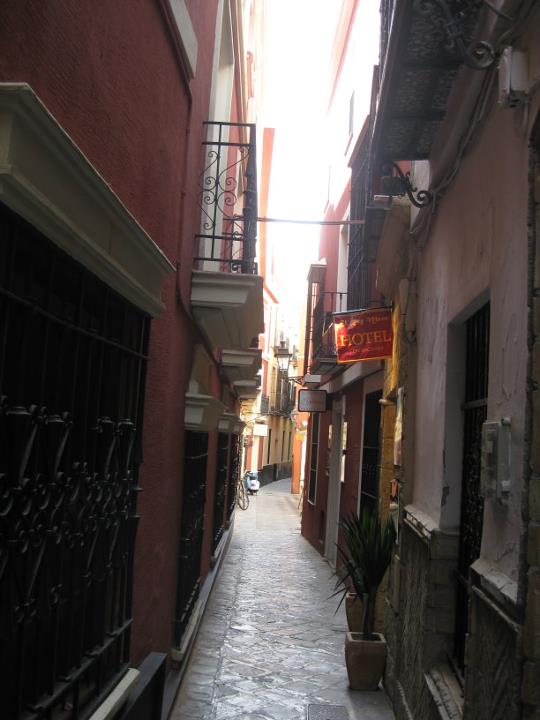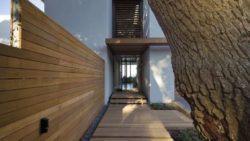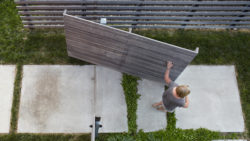Architecture and Travel
Architecture and travel. They go together like peanut butter and jelly. Cookies and milk. Jack and Diane. Anyone who knows an architect knows they are predisposed to want to travel the world. As a matter of fact, right now (Sunday afternoon) our fearless leader is en route to the Bahamas for some much-deserved R&R. I just got back from two trips. Marica travels all the time. Eric just moved. We’re a profession of travelers. But why? Let’s try and see if we can narrow down some reasons.
Note: This is the eighteenth post in a group series called #ArchiTalks in which Bob Borson of Life of an Architect gives a group of us architects a theme or a set of questions and we all have to post our response… this month’s theme: “Architecture and…”.
Travel
I’ve written previously about my love of traveling. When I wrote for the AIA’s #ILookUp campaign, I mentioned traveling as a piece so inherent to my DNA and profession that I come with a disclaimer when dating.
“I love traveling to new places, experiencing the culture and immersing myself into the local life as much as possible. An architect by trade, I need someone who will patiently smile while I gawk at buildings.”
I wrote last summer about my first trip to Vegas and what it’s like vacationing with an architect (read: we get up early and explore). It even prompted the use of a hashtag #IComeWithATravelWarning. And I mentioned in an #ArchiTalks last fall that most of my vacations end with a camera full of pictures…of architecture. So what gives? Why do architects feel the NEED to travel?
Wired for Wanderlust
I’m no scientist, but it seems like there’s something connected with the creative brain that also causes or feeds a desire to explore, constantly learn, and try new things. Nothing accomplishes all three more than traveling. When I travel, nothing excites me more than seeing the architecture and experiencing the culture. Why? Because it’s more than likely new and nothing like mine, but not without its context. About this time, we’ll put on our Sherlock Holmes cap and start looking for clues as to what caused the city to look the way it does. Is it oceanside and had a history of Spanish invasion? Did the hot summers call for cool marble and tall ceilings to move air? We may be in the building business, but we’re part anthropologist too. Every city has their quirk, even the next town over. We’re visual creatures that are wired to learn more…to constantly build off what we learned from the last design, the last building we saw, the last culture we experienced. Traveling plays into all of that. We can step away from work and feed the fire. But our architect brain doesn’t ever shut off. We “simply” experience something new to then bring back and potentially inform a detail on the next project. Personally, my passport hasn’t been used in 3 years now and I’ve got a serious case of the twitch.
What’s in a building?
No two pieces of architecture are alike…well except for those cookie cutter builder homes in suburbia…but I don’t really count those as architecture. So what makes them different, why does it matter, and how do we tell? Just as the anthropologist looks for clues in the culture and an archaeologist looks for clues underfoot, an architect can look at a building and determine a handful of things. Even if the architect of record is not on hand (or even still alive) we have this time capsule of knowledge and culture in the shape of the architecture he or she created and left for us. Did they care about sustainability? What was the common material of the time? Is there symbolism in the design? The Cathedral of Christ the Light, for example, has a floor plan that hearkens back to the original religious symbol of the fish. Can you see it?
Sure, you might be able to get a glimpse that helps you understand it from a diagram in a textbook or magazine, or this picture above, but travel helps you FEEL it. It’s completely different to see a picture than to walk into a space and be engulfed in the symbolism, care, and intention that went into its design. Even non-architects get it…if the design is powerful enough. I was lucky enough to witness this firsthand two weeks ago when I was traveling with friends and siblings in San Francisco. We had already had a long day and I could tell my sister and brother were ready to get back to the hotel and rest before the night ahead. Stopping at a church was the last thing they wanted to do. And like most modern works of architecture from the ’60s and ’70s, it is relatively unassuming from the exterior. But when you walk through those doors…
A photo posted by Lora Teagarden (@l2designllc) on
I can’t begin to describe to you how proud I was of our profession in that moment. For them to be literally stunned to silence through the power of design. To understand why I want to come to places like this, why I travel, and why I do what I do every day.
Expand the horizons
I have a map of the world. On it, I’ve marked off the countries I’ve had the fortune to visit so far. But it also serves as a reminder to me for plan, save, and prepare for the next trip. By expanding my horizons on the map, I expand my mental horizons of what is possible in life and design. I’ve written before about the fact that we have to continue to better ourselves or we perish in the profession. Travel helps this. Nothing forces you to grow more than an unknown culture and the need to eat. You can either eat at the Cheesecake Factory, or not at all…or find a cool local spot and see what the local culture eats. Granted, I think I’d be squeamish about eating bugs, but I’m pretty sure you could put me anywhere and I’d find something. Traveling helps me do that. (Positive travel experiences also reinforce that.) Some of my best memories are of talking to locals at a bar, or finding and visiting a place because of a conversation with said locals.It’s not a complete rationale, and definitely doesn’t cover all of the reasons architects love, or feel an inherent need, to travel – but it’s enough for this architect. I’m already itching for the next trip.
Go have an adventure,
To see the take on “Tools” from other Architects, follow the links to the others in the #ArchiTalks group who are posting today on the theme: Bob Borson – Life of an Architect (@bobborson) Life of an Architect Marica McKeel – Studio MM (@ArchitectMM) “Architecture and Photography” Jeff Echols – Architect of the Internet (@Jeff_Echols) “Architecture and a Future Without Architects” Lee Calisti – Lee CALISTI architecture+design (@leecalisti) “architecture and __” Jes Stafford – Modus Operandi Design (@modarchitect) “Architecture and Gaming” Michele Grace Hottel – Architect (@mghottel) “#ArchiTalks 18: architecture and… the bigger picture” Meghana Joshi – IRA Consultants, LLC (@MeghanaIRA) “Architalks 18: Architecture and Mathematics” Amy Kalar – ArchiMom (@AmyKalar) “Architalks 18: Architecture and … Parenting” Rosa Sheng – Equity by Design (@EquityxDesign) “Architecture And the Era of Connection” Emily Grandstaff-Rice – (@egrfaia) “Architecture and More” Eric T Faulkner – Rock Talk (@wishingrockhome) “architecture and m&ms” Jarod Hall – di’velept (@divelept) “Architecture and the Myth of the Master Builder” Greg Croft – Sage Leaf Group (@croft_gregory) “Architecture and Real Estate” Jeffrey A Pelletier – Board & Vellum (@boardandvellum) “Architecture and Interior Design” Keith Palma – Architect’s Trace (@cogitatedesign) “Architecture + Memories” Michael LaValley – Evolving Architect (@archivalley) “Architecture and Ego / The Architect’s Unique Struggle with ‘Good’ Design” Collier Ward – One More Story (@BuildingContent) “Architecture and Storytelling” Michael Riscica – Young Architect (@YoungArchitxPDX) “Architecture and Yoga” Sharon George – Architecture by George (@sharonraigeorge) “Architecture and Kids” Brady Ernst – Soapbox Architect (@bradyernstAIA) “Architecture and Ego” Samantha Raburn – The Aspiring Architect (@TheAspiringArch) “Architecture and Wrestling” Adam Denais – Defragging Architecture (@DefragArch) “[#ArchiTalks 18] Architecture and Strange Travel Etiquette” Jim Mehaffey- Yeoman Architect (@jamesmehaffey) “Architecture and…my Generation.”






